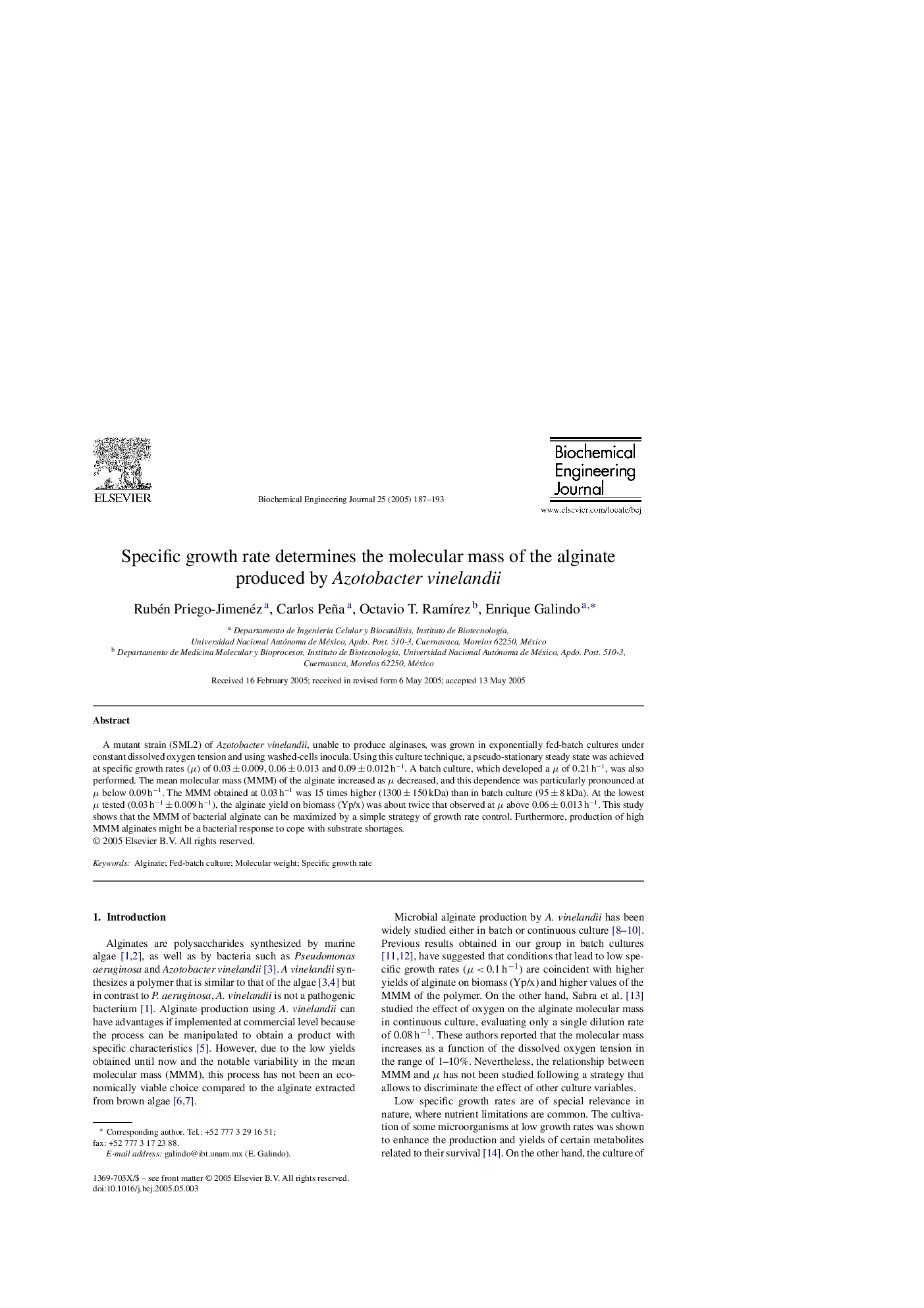| Article ID | Journal | Published Year | Pages | File Type |
|---|---|---|---|---|
| 10160777 | Biochemical Engineering Journal | 2005 | 7 Pages |
Abstract
A mutant strain (SML2) of Azotobacter vinelandii, unable to produce alginases, was grown in exponentially fed-batch cultures under constant dissolved oxygen tension and using washed-cells inocula. Using this culture technique, a pseudo-stationary steady state was achieved at specific growth rates (μ) of 0.03 ± 0.009, 0.06 ± 0.013 and 0.09 ± 0.012 hâ1. A batch culture, which developed a μ of 0.21 hâ1, was also performed. The mean molecular mass (MMM) of the alginate increased as μ decreased, and this dependence was particularly pronounced at μ below 0.09 hâ1. The MMM obtained at 0.03 hâ1 was 15 times higher (1300 ± 150 kDa) than in batch culture (95 ± 8 kDa). At the lowest μ tested (0.03 hâ1 ± 0.009 hâ1), the alginate yield on biomass (Yp/x) was about twice that observed at μ above 0.06 ± 0.013 hâ1. This study shows that the MMM of bacterial alginate can be maximized by a simple strategy of growth rate control. Furthermore, production of high MMM alginates might be a bacterial response to cope with substrate shortages.
Related Topics
Physical Sciences and Engineering
Chemical Engineering
Bioengineering
Authors
Rubén Priego-Jimenéz, Carlos Peña, Octavio T. RamÃrez, Enrique Galindo,
